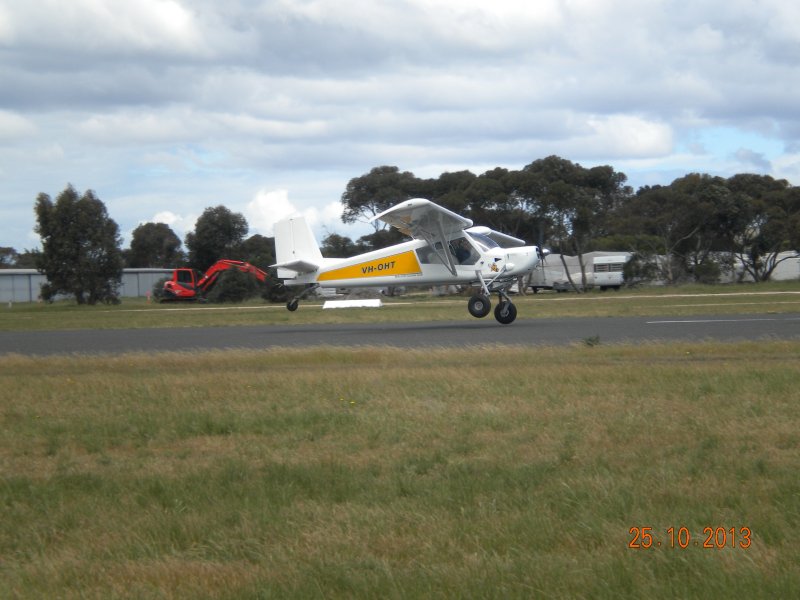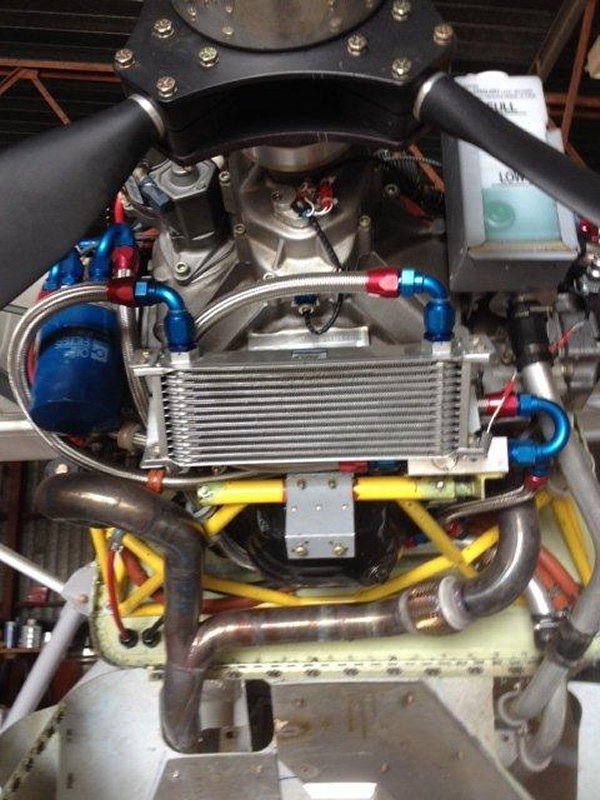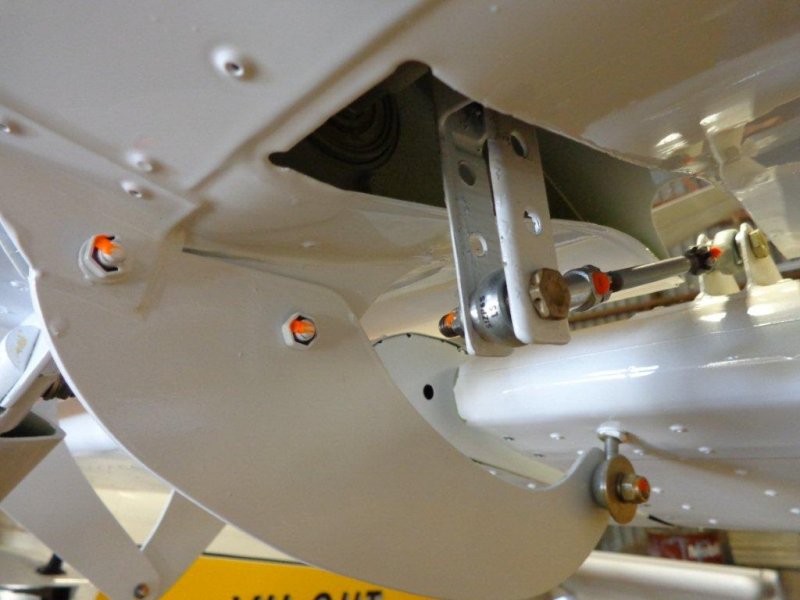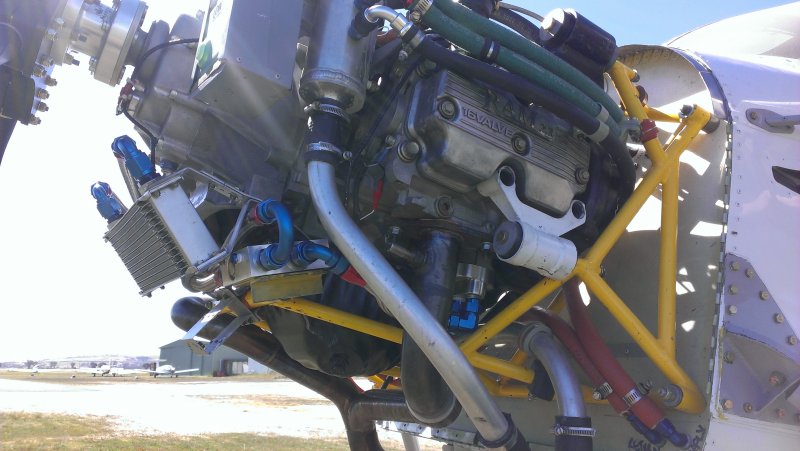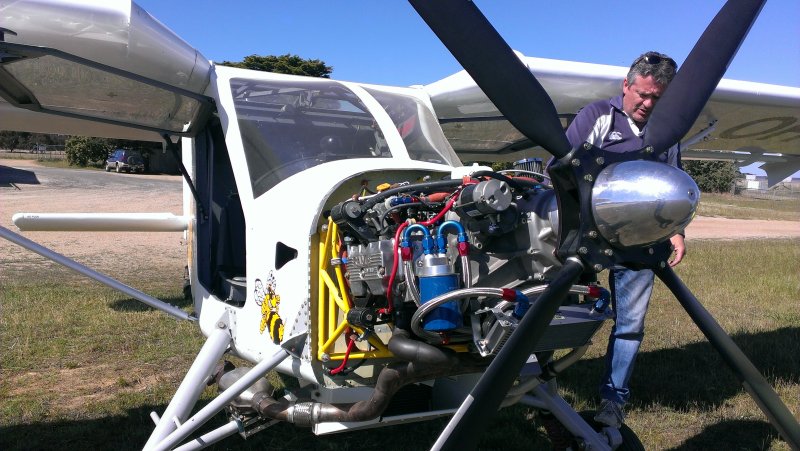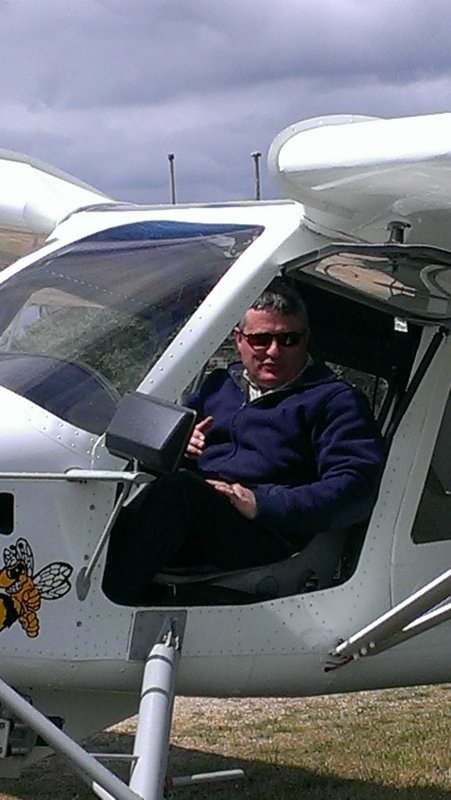28 May 2014
click on images for a bigger view.
After the last blog entry in July last year quite a lot has happened.The engine ground testing continued and we felt this had matured to a level that we were confident about moving the Hornet around on the ground.
All was proceeding quite well.
Unfortunately after ground testing the Hornet one day last July we found some hairline cracks in the propeller and a replacement was needed.
The manufacturer agreed with our initial inspection and decided to replace the propeller for a slightly better one more suited to our high horsepower engine.
We just had to wait for it to arrive. With this in mind we opted to try another propeller, a Warp Drive 4 blade design from the US.
The Warp Drive blades were smaller but made from solid Carbon Fibre.
The ground testing process began again and the results were as we thought, max static thrust was now down to around 500lbs.
Getting the Warp Drive propeller to run at its best proved to be a fiddley.
One blade out of four being just slightly out would make the engine run rough at high power settings.
Very careful adjustment was needed to get it right. With propeller issues sorted for now, we were ready for the first flight.
So in October 2013 we carried out the first flight. Initial tests included some small hops up and down the runway at Bacchus Marsh proving the safe handling characteristics.
We were ready now to try our first flight. The Hornet accelerated very quickly with the 4 blade Warp Drive propeller and leapt into the air.
It was easily out climbing the Super Cub chase plane and the rest of the afternoon was spent learning how the Hornet feels and control response.
It was a great day for the build team and our little gliding club. It had been almost 3 years exactly since we started, 1500 man hours and total build cost of approx $85000.
Not all was perfect though and a high oil temperature was the next issue to overcome.
So another delay while we worked on designing a system that would cope with the high oil temperature issue.
This was achieved by fitting an oil cooling system which had always been plan “B”.
Although better it was still not acceptable so the next 10 hours of flight testing was spent fine tuning this system.
We now have it to a stage where it is working quite well.
Whether it can survive a 40deg C Australian summer’s day of glider towing will be tested later when the summer weather returns.
Minor flight control adjustments have been made to improve climb and control response.
Climb performance is currently between 800 & 1000ft per min at 60knots depending on weight and engine RPM at 5500.
Cruise speed is around 75 knots and this is as expected, similar to the other Rotax 914 powered Hornets.
The water temperature has been perfect since day 1 and rarely gets above 90 to 95 deg C. The descent rate is quite high at over 1500ft per min easily.
Engine RPM’s could not be brought back to idle on descent as a propeller back driving issue through the gearbox induced a rough running zone which felt uncomfortable.
So keeping the engine RPM at around 2500 meant the propeller is only turning at just under 1000 RPM, the Hornet comes down very quickly.
With the water temperature almost constant, the power can be brought back almost straight away at the top of the climb.
With the initial flights out of the way our replacement propeller had arrived from GA Prop.
By now the Hornet had completed approximately 15 hours of testing by 4 different pilots and we were happy with how it had been flying.
So on went the 3 blade GA Prop set to the angle found best during last year’s ground testing.
The GA Prop was a big improvement, much smoother and slightly better performance. To date we have no maintenance issues with this new GA Prop. Malcolm has spent some time making adjustments to the Engine Control Unit and this is still ongoing.
Currently the Hornet has completed 20 hours of flight testing.
This is half way through the minimum 40 hour flight test program which is fairly standard for Experimental Aircraft here in Australia.
We are hoping to do the first glider tow any day now and only waiting on permission from the authorities.
This process was agreed to by all parties in the early stages of the Hornet Project and currently we don’t envisage any issues.
So the project goal of a glider tug with Super Cub performance is looking achievable but the operating costs will be much lower.
Fuel consumption so far to date has been around 28-30 litres per hour of Premium Unleaded.
In the near future we will commence the glider towing test phase and continue to work on fine tuning the control of engine operating parameters.
-
All for now.
- Man hours to date:
- 1500hrs
Regards Jack
